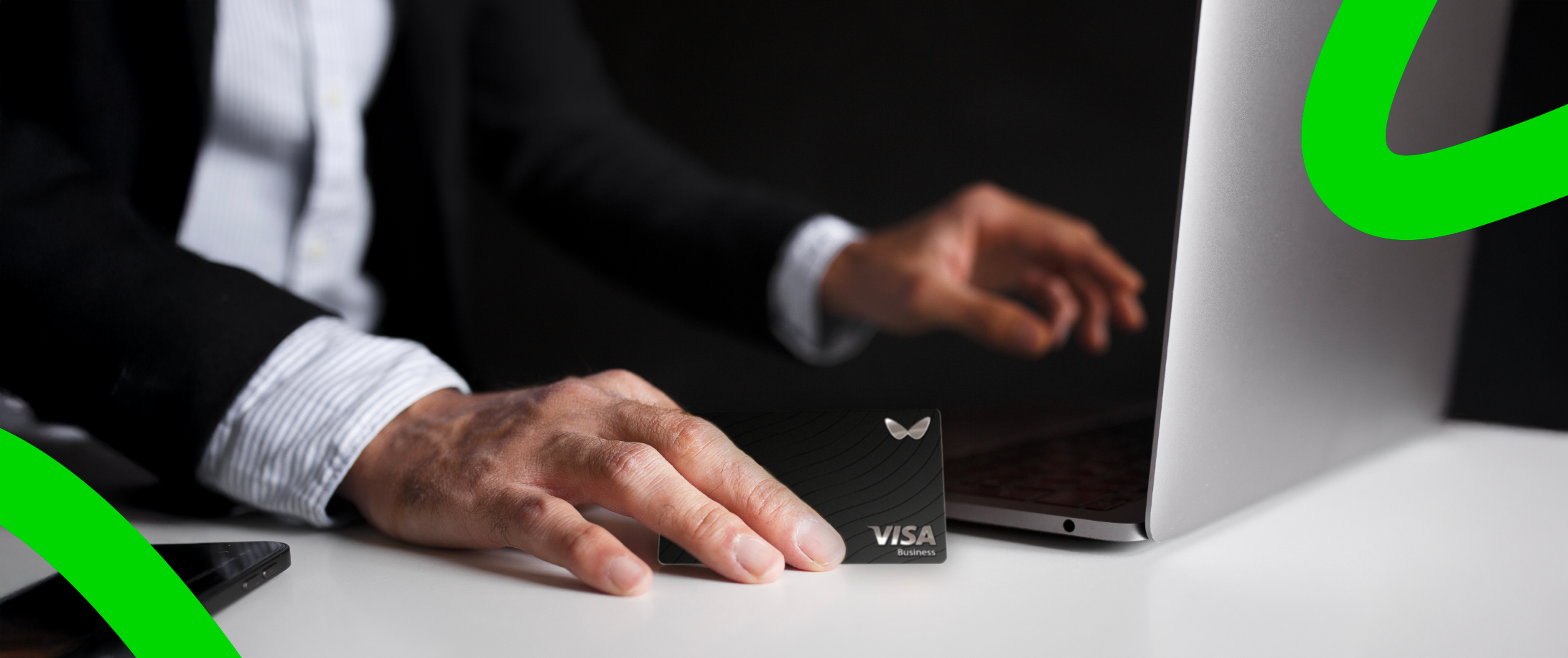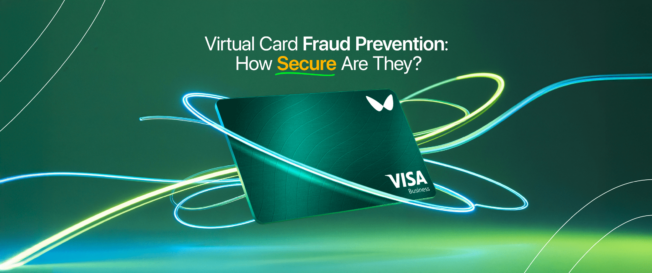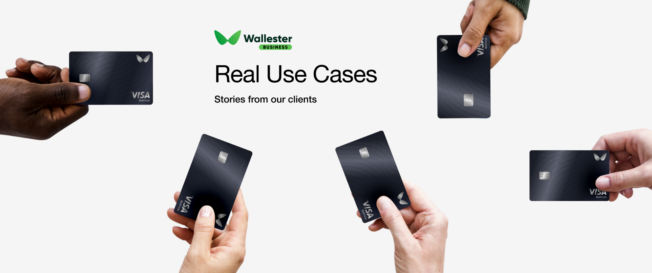Payment fraud is on the rise, and businesses are feeling the heat. To stay ahead, many are turning to virtual cards – a smarter, safer way to handle payments. Unlike traditional cards, virtual cards are built with security in mind, offering features that make it much harder for fraudsters to get through. But how secure are they really? And what sets them apart from the payment methods companies have used for decades?
Key Takeaways
- Virtual cards generate unique numbers for each transaction, making stolen details worthless.
- Customisable spending limits contain potential fraud losses to predetermined amounts.
- Real-time monitoring identifies suspicious activity immediately through automated alerts.
- Traditional payment methods face rising fraud risks from data breaches and card theft.
- Virtual cards provide dynamic security that adapts to each specific transaction.
- Businesses gain greater control over cash flow management through programmable restrictions.
- Layered security integration creates comprehensive protection against multiple attack vectors.
Virtual cards: what are they and how do they work?
Virtual cards function as digital versions of physical payment cards, generating unique card details for each transaction or vendor relationship. If you’re weighing the pros and cons of both options, you can explore the differences in more detail in our article on Virtual vs. Physical Cards: Which Is Right for Your Business?. When you create a virtual card, the system produces a temporary card number, expiration date, and security code that links directly to your main bank account or credit line. This process happens instantly through secure digital platforms, allowing businesses to make payments without exposing their primary banking details.
The technology behind virtual cards relies on tokenisation, where sensitive payment information gets replaced with encrypted tokens. Each virtual card maintains its own set of parameters, including spending limits, merchant restrictions, and usage timeframes. When a payment goes through, the virtual card number acts as a shield between your actual account and the transaction, creating multiple layers of authentication before any money changes hands.
Most virtual card systems integrate smoothly with existing accounting software and expense management platforms. Users can generate new cards through web dashboards or mobile applications, set specific controls for different types of purchases, and monitor all transactions in real time. This level of control transforms how businesses handle their payment processes, moving away from static card numbers towards dynamic, adaptable payment solutions. For a broader overview of how virtual cards fit into business operations, check out The Complete Guide to Virtual Cards for Business.
What risks occur if not using virtual cards?
Relying only on traditional payment methods can leave businesses wide open to fraud and the financial losses that come with it. Physical cards and standard bank accounts are still easy targets for criminals. From a lost or stolen card to a massive data breach, there are plenty of ways sensitive payment details can fall into the wrong hands. And once that happens, fraudsters often have free rein to spend until someone notices, which can take days or even weeks.
One of the biggest dangers is account takeover. If a criminal gets hold of login credentials, they can gain full access to a company’s accounts. That means they can transfer funds, make large purchases, or even lock out legitimate users before anyone catches on. Traditional card systems often aren’t equipped with the right tools to spot this kind of suspicious activity early, which gives fraudsters more time to do damage.
Then there’s card skimming – a problem that hasn’t gone away. Skimmers can still be found on ATMs, gas pumps, and retail card readers, silently collecting card data from unsuspecting users. That stolen info usually ends up for sale on the dark web, where it’s used to make fraudulent purchases across various merchants. And when your main card is compromised, there’s often little you can do to stop the fallout.
But the costs go beyond stolen money. A serious fraud incident can do real harm to a company’s reputation. If customer payment info gets exposed, trust takes a hit, and rebuilding that trust isn’t easy. It can take months or even years to recover from the damage. That’s why having stronger security measures in place is no longer optional. It’s a smart, proactive step to protect both your finances and your reputation.
The advantages of virtual cards
Virtual cards stand out when it comes to fraud prevention, thanks to the way they’re built. Each one creates a unique set of card details that become useless to fraudsters once they’ve been used or have expired. That means even if someone manages to steal the information, it’s not going to help them for long. This is a big difference compared to traditional cards, where a single compromised number can be reused over and over until someone catches on and cancels it.
One of the biggest strengths of virtual cards is how much control they give you. You can tailor each card to fit a specific purpose, which makes them a powerful tool for managing risk. For example, you can:
- Set exact spending limits for individual purchases, daily activity, or monthly budgets, so even if something goes wrong, the damage stays minimal.
- Adjust those limits in real time through a web or mobile platform, giving you instant flexibility.
- Track every transaction as it happens, rather than waiting for a monthly statement or delayed fraud alert.
- Get notified the moment something unusual occurs, allowing you to react quickly before losses pile up.
Another smart feature is the ability to create cards that work only with specific merchants. You can generate separate cards for different vendors, subscriptions, or services. That way, if one merchant experiences a data breach, the rest of your payment system stays safe. Instead of replacing your entire card setup, you just cancel the affected virtual card and move on.
All of these features make virtual cards a serious upgrade when it comes to protecting your money and keeping control over your payments.
Payment fraud is on the rise
As more payments move online, fraudsters are finding new ways to take advantage. They’re quick to adapt, using every opportunity to find weak spots in digital payment systems. The growth of e-commerce has made it easier for businesses to reach more customers, but it has also opened up more points of entry for cybercriminals looking to steal financial data.
Every year, major retailers and financial institutions experience data breaches that expose millions of payment records. These leaks hand over credit card numbers, bank account details, and personal information to people who know exactly how to use them. Once this information is out there, it often spreads across many platforms, which means a single breach can affect thousands of customers and businesses at once.
Fraud tactics are also becoming more advanced. Criminals now use artificial intelligence and machine learning to find and exploit gaps in payment systems. Phishing emails that look completely legitimate trick employees into handing over login information. In other cases, scammers use social engineering to manipulate staff into revealing sensitive payment data. Many older security tools simply aren’t built to keep up with this level of sophistication.
The rise of mobile payments has made things even more complicated. While digital wallets come with some built-in security, they also bring new risks. If a mobile device or app is compromised, it can become an open door for unauthorised transactions. For businesses, this means security plans need to do more than just protect desktop systems. They also need to cover mobile environments without making things harder for customers who expect fast, easy, and flexible payment options.
A list of common types of payment fraud
Payment fraud manifests in various forms, each requiring specific prevention strategies:
- Card-not-present fraud. Online transactions where fraudsters use stolen card details without possessing the physical card, often targeting e-commerce platforms and subscription services.
- Account takeover. Criminals gain control of legitimate accounts through stolen credentials, enabling them to make unauthorised purchases and change account settings.
- Identity theft. Fraudsters create new accounts using stolen personal information, establishing credit lines and payment methods in victims’ names.
- Business email compromise. Sophisticated attacks targeting companies through compromised email accounts, leading to fraudulent wire transfers and payment diversions
Phishing attacks continue to be a primary method for collecting payment information. Criminals create convincing replicas of legitimate websites and emails, tricking users into entering their banking details and card information. These attacks often target specific industries or companies, using insider knowledge to make their communications appear authentic.
Synthetic identity fraud combines real and fabricated personal information to create new identities for opening accounts and obtaining credit. This type of fraud can go undetected for months or years, as synthetic identities often maintain good payment histories before executing large fraudulent transactions.
Card testing involves criminals using stolen card details to make small purchases, verifying which accounts remain active before attempting larger fraudulent charges. E-commerce sites become unwitting testing grounds for these activities, processing numerous small transactions that may go unnoticed by traditional fraud detection systems.

What are the effects of fraud on different payment methods?
Not all payment methods are affected by fraud in the same way. Some offer better protection or faster recovery than others, while a few leave businesses more exposed than they might realise. Understanding how fraud plays out across different tools can help companies choose smarter ways to handle transactions.
Credit and debit cards
When fraud happens on a credit card, the impact is usually felt right away. Money gets spent without permission, and while most card providers offer zero liability protection, the process of sorting it all out can be painfully slow. It often takes weeks, sometimes even months, to investigate and reverse those charges. During that time, businesses may run into cash flow issues, especially if the amounts involved are large.
Debit card fraud can be even worse. Instead of a credit line, the money comes straight out of your business bank account. That means real funds are gone the moment the fraudulent transaction goes through and recovering them is usually more difficult and slower than with credit cards.
Replacing compromised cards is also a hassle. The business has to cancel the old card, request a new one, and update all the systems and services that were linked to it. That means logging into vendor accounts, updating payment information, and possibly dealing with failed automatic payments. This kind of disruption can lead to service interruptions, missed renewals, and strained customer relationships.
On top of that, there are chargeback fees to worry about. Card companies often hit businesses with penalties when they have too many fraud-related disputes. Even if the stolen money gets refunded, those extra charges can pile up quickly. For companies dealing with repeat incidents, these fees can eat into profits and become a serious financial burden over time.
Buy now, pay later (BNPL)
BNPL services come with their own set of fraud risks, and many of those challenges stem from how fast and easy these platforms are designed to be. Because they often approve users with only basic identity checks, it’s easier for fraudsters to slip through the cracks. Criminals use stolen personal information to make purchases they never plan to pay for. Since payments are delayed, it can take a while before anyone even realises something’s wrong.
One common issue is account creation fraud. In these cases, fraudsters use synthetic identities (a mix of real and fake information) to set up seemingly normal accounts. These accounts may behave like regular customers at first, making small payments and building trust. But once they’re in, they can suddenly place large orders and vanish before anyone can react. Because BNPL platforms often share systems across multiple merchants, one successful scam can ripple out and affect other businesses on the network.
Solving BNPL fraud can be especially tricky. Unlike traditional card payments, these transactions involve more than just the buyer and the seller. There’s also the BNPL provider in the middle, and each party has its own role and responsibilities. That makes it harder to figure out exactly what happens when something goes wrong.
Digital wallets and mobile payments
Digital wallet fraud usually starts when a mobile device is compromised or when login credentials fall into the wrong hands. Once someone gains access to a digital wallet, they can start making unauthorised purchases anywhere that accepts mobile payments. The very features that make digital wallets convenient – quick checkout, stored cards, and contactless access – can also create openings for fraud if the right security steps aren’t in place.
Mobile apps bring another layer of risk. Some apps are designed to steal payment information or intercept data during transactions, especially on phones and tablets that don’t have the latest security updates. Many users don’t realise an app is malicious until it’s too late. Once installed, these apps can quietly track payment activity and collect sensitive details without raising any alarms.
Another concern is proximity fraud. This happens when criminals use hidden devices to read payment data from nearby phones. Although modern digital wallets are built with defenses to block this type of attack, not all systems are up-to-date. Older setups can still be exposed to more advanced versions of digital skimming, putting payment information at risk even when the phone stays in your pocket.
Virtual payments
Fraud attempts against virtual cards run into serious roadblocks right from the start. Since these cards are temporary and come with built-in limits, they leave very little room for abuse. Even if someone manages to get hold of the card details, restrictions on spending and merchant use usually stop any large or repeated unauthorised transactions. The constantly changing nature of virtual card numbers means that stolen information loses its value almost immediately.
When someone tries to misuse a virtual card, the system reacts fast. Alerts are triggered right away, and the card can be suspended automatically before any real damage is done. These platforms watch for suspicious patterns as they happen, not hours or days later. That kind of real-time visibility gives businesses a huge advantage, narrowing the time criminals have to do anything harmful.
Another major benefit is that fraud is usually contained to just one card. If there’s a breach, it doesn’t spill over to other vendors or disrupt the entire payment system. The business can freeze or cancel the affected card and keep everything else running smoothly. This kind of targeted control makes virtual cards a reliable way to keep payments secure without interrupting day-to-day operations.
How to protect yourself from fraud
Keeping fraud at bay takes more than one tool or tactic. A strong prevention strategy needs to cover multiple angles, from technology to team awareness. It’s about building layers of protection that work together to catch problems early and limit the damage if something goes wrong.
Start by keeping a close eye on your finances. Monitoring all financial accounts and payment activity on a regular basis helps spot anything suspicious before it turns into a bigger issue. Clear internal processes make a difference here. Every business should have straightforward steps in place for reviewing transactions, investigating red flags, and taking action quickly when something doesn’t look right.
People are often the weakest link in any system. That’s why employee education matters just as much as technology. Staff need to know how to:
- Recognise phishing attempts and avoid falling for fake emails or messages
- Follow correct login and verification procedures without skipping steps
- Report anything unusual, even if it seems minor at first
Running regular security awareness sessions helps keep these habits sharp and top of mind.
On the technical side, staying current is important. Outdated systems and unpatched software create easy entry points for attackers. Businesses should:
- Keep payment platforms and related software up to date
- Apply security patches as soon as they become available
- Use strong encryption to protect sensitive data
- Require multi-factor authentication when accessing financial tools
Another area that deserves attention is vendor management. If your company works with third-party providers that handle payments or store sensitive information, it’s important to ask the right questions. Find out how those partners manage security and how they would respond in case of a breach. Contracts should clearly outline security expectations and define who is responsible if fraud occurs.
Preventing fraud with virtual cards
Virtual cards help prevent fraud by combining several layers of security that work together to protect every transaction. At the core is the way these cards generate unique details for each payment. Instead of using a number that stays the same as a traditional card, virtual cards can be set to expire after a single use or within a specific timeframe. That means if the information is ever compromised, it quickly becomes useless.
Spending controls add another level of protection. Businesses can set limits on how much can be spent, which types of merchants are allowed, and when the card can be used. You can even match a virtual card’s limit to a specific invoice. So even if someone manages to get hold of the card details, they won’t be able to spend more than what was originally intended. These settings can be changed at any time, giving you flexibility while keeping security tight.
Another benefit is how easily virtual cards connect with your existing systems. When a card is used, the system can automatically check it against your purchase orders or pre-approved expenses. If the payment matches what’s expected, it goes through. If something looks off, the system flags it, and you can step in to take a closer look before anything is processed.
And if there’s ever a hint of trouble, you don’t have to wait days for a replacement. Virtual cards can be frozen or canceled instantly, and new ones can be created just as fast. This quick response helps limit any damage while keeping your payments running without interruption. It’s a simple but effective way to stay in control, even in the face of fraud attempts. If you’re exploring your options, take a look at the Top Virtual Card Providers in 2025 to find a solution that fits your business needs.
Why layered security is important: the power of integration
The most effective approach brings together different types of security measures that work as a team. Virtual cards are a great example of this. They don’t work on their own – they connect with other systems your business is already using. When you combine their built-in protections with existing authentication processes, you get a stronger, more flexible defense against a wide range of threats.
Multi-factor authentication plays a big role here. Instead of just needing card details to approve a transaction, users also have to verify their identity in another way. This extra step makes it much harder for fraudsters to get through. When combined with virtual card rules, like spending limits and usage windows, these verification layers build strong barriers against unauthorised activity. The best part is that it all runs behind the scenes, so users don’t have to deal with extra friction.
Virtual cards can also connect directly with broader security tools through APIs. This connection allows them to share real-time data with fraud detection systems, payment processors, and other platforms. When all of these tools communicate with each other, they can detect suspicious behavior faster and respond more effectively than if each one worked alone.
How Wallester can help you in preventing fraud
Wallester’s virtual card platform gives businesses a smarter way to stay ahead of fraud. It’s built with advanced security features that are tailored specifically for corporate payments. Every virtual card comes with a unique number and customizable settings, so businesses can control exactly how, where, and when each card is used. This flexibility makes it easier to match payment tools with real business needs and harder for fraudsters to exploit them.
Real-time transaction monitoring is baked into the system. It flags suspicious activity the moment it happens, allowing teams to act fast before anything gets out of hand. And because Wallester integrates easily with your existing expense management and accounting tools, there’s no need to compromise on speed or convenience. Payments continue to flow smoothly, without putting security at risk.
The platform also provides advanced analytics that helps you spot patterns and weak points before they turn into problems. By learning from past financial transactions, the system becomes more accurate over time. It’s smart enough to catch real threats without constantly raising false alarms, so legitimate payments go through without unnecessary delays. You can learn more about the platform and explore its full capabilities at wallester.com/business.
If something does go wrong, Wallester’s support team is ready to help. They work with you to fine-tune your security settings, respond to incidents, and make sure you’re always protected. The mix of intelligent tech and expert guidance gives your business the tools it needs to prevent fraud without slowing anything down.
How can digital payment fraud be prevented?
Can a virtual card be scammed?
Can a virtual card be hacked?
How does a virtual card protect you?



